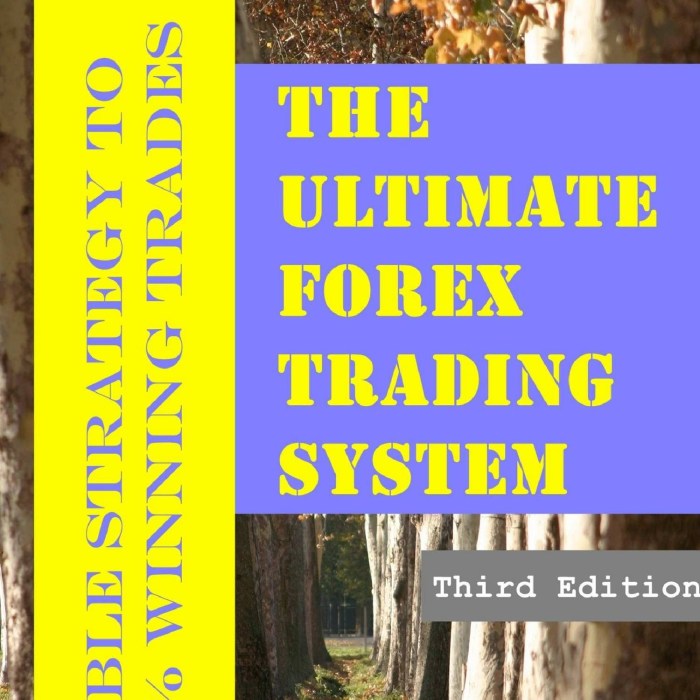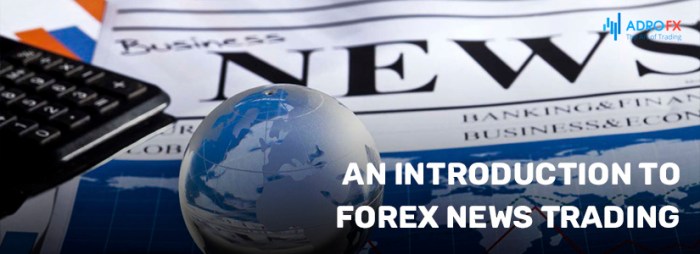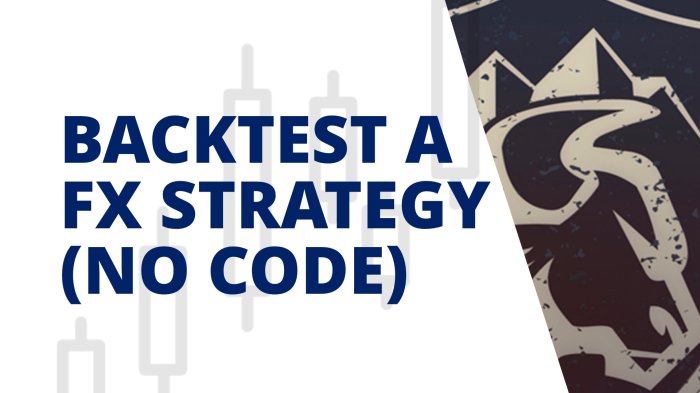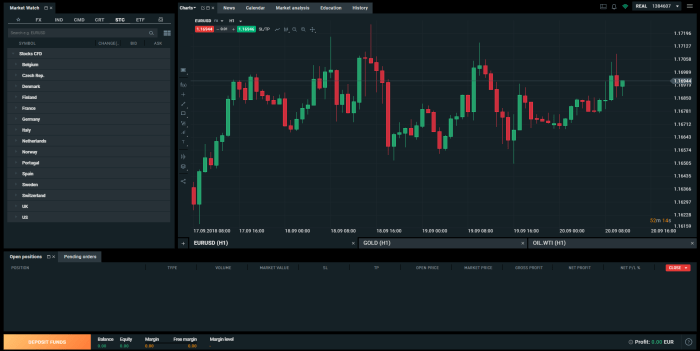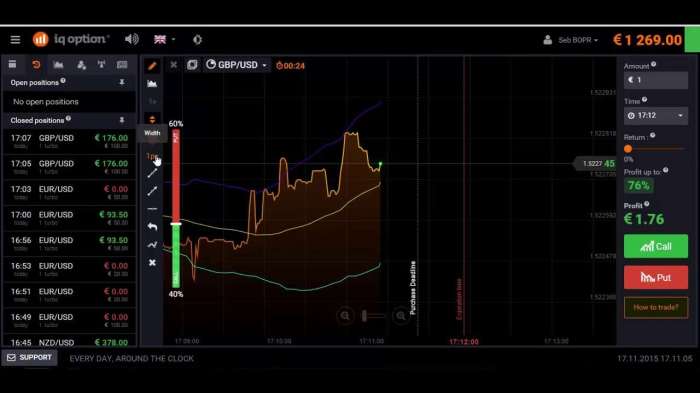
How to Maximize Profits in Forex Trading: Think you can just jump into the forex market and rake in the cash? Think again. This isn’t some get-rich-quick scheme; it’s a complex world of currency fluctuations, global events, and serious risk. But if you’re smart, strategic, and disciplined, you can absolutely boost your chances of profiting. We’re diving deep into the strategies, techniques, and mindset shifts you need to navigate this exciting—and potentially lucrative—market.
From understanding market dynamics and crafting a killer trading strategy to mastering technical and fundamental analysis, we’ll cover everything you need to know. We’ll also explore the crucial role of money management, risk control, and the often-overlooked psychological aspects of trading. Get ready to level up your forex game and unlock your profit potential.
Understanding Forex Market Dynamics

The forex market, a global decentralized marketplace for exchanging currencies, operates on complex dynamics influenced by a multitude of factors. Understanding these dynamics is crucial for successful trading, as it allows you to anticipate market movements and make informed decisions. Ignoring these forces can lead to significant losses. This section explores the key drivers of currency exchange rates.
Factors Influencing Currency Exchange Rates
Numerous interconnected factors influence the value of one currency against another. These factors can be broadly categorized as economic, political, and psychological. Economic factors, such as interest rates, inflation, and economic growth, play a dominant role. Political stability and geopolitical events also significantly impact currency values. Finally, market sentiment and trader psychology contribute to the overall volatility and price fluctuations.
Impact of Economic Indicators on Forex Trading
Economic indicators provide valuable insights into a country’s economic health and influence currency valuations. Strong economic data generally strengthens a currency, while weak data can weaken it. Key indicators include Gross Domestic Product (GDP), inflation rates (CPI and PPI), unemployment rates, and trade balances. For example, a higher-than-expected GDP growth often leads to increased demand for that country’s currency, pushing its value upwards. Conversely, rising inflation can erode a currency’s purchasing power, leading to depreciation.
Geopolitical Events Affecting Currency Values
Geopolitical events, such as wars, political instability, and changes in government, can significantly impact currency values. Uncertainty surrounding these events often leads to increased volatility and capital flight, causing currency depreciation. The 2014 annexation of Crimea by Russia, for example, led to a significant devaluation of the Russian ruble due to international sanctions and investor uncertainty. Similarly, Brexit caused significant volatility in the British pound due to uncertainty about the UK’s future economic relationship with the European Union.
Correlation Between Major Economic Indicators and Currency Pairs
The following table illustrates the general correlation between major economic indicators and currency pairs. It’s important to note that these correlations are not absolute and can vary depending on various market conditions and other unforeseen factors.
| Economic Indicator | Impact on Currency | Example Currency Pair | Typical Correlation |
|---|---|---|---|
| GDP Growth | Positive (increase) | USD/JPY | Positive: Higher US GDP growth tends to strengthen the USD against the JPY. |
| Inflation Rate (CPI) | Negative (increase) | EUR/USD | Negative: Higher inflation in the Eurozone tends to weaken the EUR against the USD. |
| Interest Rates | Positive (increase) | GBP/USD | Positive: Higher interest rates in the UK tend to attract foreign investment, strengthening the GBP against the USD. |
| Unemployment Rate | Negative (increase) | AUD/USD | Negative: Higher unemployment in Australia tends to weaken the AUD against the USD. |
Developing a Robust Trading Strategy: How To Maximize Profits In Forex Trading
Crafting a solid forex trading strategy is crucial for consistent profitability. It’s not about picking a “best” strategy, but rather finding the approach that best suits your personality, risk tolerance, and available time. A well-defined strategy provides a structured framework for making trading decisions, minimizing emotional impulses, and ultimately maximizing your chances of success.
Forex Trading Strategies: A Comparison
Different forex trading strategies cater to varying trading styles and time horizons. Understanding their unique risk-reward profiles is key to choosing the right fit.
- Scalping: This high-frequency strategy aims for small profits from numerous trades within a short timeframe (minutes or even seconds). Scalpers rely on minute price fluctuations and use technical indicators extensively. It demands intense focus, quick reflexes, and low transaction costs.
- Day Trading: Day traders hold positions for a single trading day, aiming to capitalize on intraday price movements. Their strategies often involve technical analysis and chart patterns, requiring active monitoring throughout the day. The risk is moderate, as positions are closed before overnight market gaps can significantly impact profits.
- Swing Trading: Swing traders hold positions for several days or weeks, profiting from larger price swings. They utilize a combination of technical and fundamental analysis, relying less on constant monitoring. This strategy offers a balance between risk and reward, potentially generating substantial profits but requiring patience and the ability to withstand short-term market volatility.
Risk and Reward Profiles of Forex Strategies
The risk-reward ratio is a critical aspect of any trading strategy. It’s the relationship between the potential profit (reward) and the potential loss (risk) for a given trade.
| Strategy | Risk | Reward | Time Commitment |
|---|---|---|---|
| Scalping | High (frequent trades, rapid price changes) | Low (small profits per trade) | High (constant monitoring) |
| Day Trading | Moderate (intraday price fluctuations) | Moderate (larger profits than scalping) | High (active monitoring during trading hours) |
| Swing Trading | Low (longer time horizons, less frequent trades) | High (potential for larger profits) | Low (less constant monitoring) |
Risk Management in Forex Trading: A Cornerstone of Success
Effective risk management is paramount in forex trading. Without it, even the best strategies can lead to significant losses. This involves defining your risk tolerance, setting stop-loss orders to limit potential losses, and diversifying your portfolio across different currency pairs. A common risk management technique is to never risk more than a small percentage (e.g., 1-2%) of your trading capital on any single trade.
Never risk more than you can afford to lose. This is the golden rule of forex trading.
Developing a Personalized Trading Plan: A Step-by-Step Guide
A well-defined trading plan is your roadmap to success. It should Artikel your trading goals, strategies, risk management rules, and money management techniques.
- Define Your Trading Goals: Determine your financial objectives (e.g., monthly income target, capital growth). Are you a long-term investor or a short-term trader?
- Choose a Trading Strategy: Select a strategy aligned with your risk tolerance, time commitment, and trading style (scalping, day trading, swing trading).
- Develop a Risk Management Plan: Establish stop-loss orders for each trade, define your maximum risk per trade (e.g., 1-2% of your capital), and diversify your portfolio.
- Implement a Money Management System: Determine your position sizing, taking into account your risk tolerance and capital. Consider using fixed fractional position sizing.
- Backtest Your Strategy: Test your strategy using historical data to assess its performance and identify potential weaknesses.
- Practice with a Demo Account: Before trading with real money, gain experience using a demo account to refine your skills and test your strategy in a risk-free environment.
- Monitor and Adapt: Regularly review your trading performance, identify areas for improvement, and adjust your strategy as needed.
Mastering Technical Analysis
Technical analysis is the backbone of many successful forex trading strategies. It involves using charts and indicators to identify patterns and predict future price movements. By mastering these tools, you can significantly improve your ability to spot profitable trading opportunities and manage risk effectively. Understanding technical analysis isn’t about predicting the future with certainty; it’s about increasing your probability of success by identifying high-probability setups.
Key Technical Indicators in Forex Trading
Several technical indicators help forex traders analyze price trends and momentum. These indicators provide signals that, when combined with other forms of analysis, can increase the accuracy of trading decisions. Understanding how these indicators work and their limitations is crucial for effective trading.
- Moving Averages (MAs): Moving averages smooth out price fluctuations, revealing underlying trends. Common types include simple moving averages (SMA), exponential moving averages (EMA), and weighted moving averages (WMA). Traders often use multiple MAs with different periods (e.g., 50-day SMA and 200-day SMA) to identify support and resistance levels and confirm trend direction. A bullish crossover occurs when a shorter-term MA crosses above a longer-term MA, suggesting a potential uptrend. A bearish crossover is the opposite, indicating a potential downtrend.
- Relative Strength Index (RSI): The RSI measures the magnitude of recent price changes to evaluate overbought or oversold conditions. RSI values above 70 are generally considered overbought, suggesting a potential price reversal to the downside. Values below 30 indicate oversold conditions, hinting at a potential price reversal to the upside. It’s important to note that RSI divergences (price making new highs while RSI makes lower highs, or vice versa) can also be significant trading signals.
- Moving Average Convergence Divergence (MACD): The MACD is a trend-following momentum indicator that shows the relationship between two moving averages. It consists of a MACD line (difference between two exponential moving averages) and a signal line (moving average of the MACD line). Crossovers between the MACD and signal lines can indicate potential buy or sell signals. MACD histograms (the difference between the MACD and signal lines) can also be used to identify momentum shifts.
Interpreting Candlestick Patterns
Candlestick patterns are visual representations of price action over a specific period. Understanding these patterns can provide valuable insights into market sentiment and potential price movements. While individual candlestick patterns are not foolproof, their combined interpretation with other indicators increases their predictive power.
For example, a bullish engulfing pattern occurs when a large green candlestick completely engulfs a preceding red candlestick, suggesting a potential bullish reversal. Conversely, a bearish engulfing pattern, where a large red candlestick engulfs a preceding green candlestick, suggests a potential bearish reversal. Other common patterns include hammers, hanging men, shooting stars, and dojis, each conveying specific information about market sentiment and potential price movements.
Support and Resistance Levels in Forex Trading
Support and resistance levels are price zones where the price is expected to encounter significant buying or selling pressure. Support levels represent price floors where buyers are likely to step in, while resistance levels represent price ceilings where sellers are likely to emerge. These levels can be identified using previous price highs and lows, trendlines, Fibonacci retracements, and other technical tools. Breakouts above resistance levels can signal bullish momentum, while breakdowns below support levels can indicate bearish momentum. Identifying and trading around these levels can significantly enhance trading opportunities.
Reliable Technical Analysis Tools and Resources
Numerous tools and resources can assist in technical analysis. These range from charting software to online educational platforms.
- TradingView: A popular charting platform offering a wide range of technical indicators, drawing tools, and community analysis.
- MetaTrader 4 (MT4) and MetaTrader 5 (MT5): Widely used trading platforms with built-in charting and technical analysis capabilities.
- Babypips: A well-regarded educational resource for forex traders, offering comprehensive tutorials on technical analysis and other trading topics.
Utilizing Fundamental Analysis
Fundamental analysis in forex trading is all about understanding the bigger picture – the economic forces that drive currency values. Unlike technical analysis, which focuses on chart patterns and price movements, fundamental analysis delves into the underlying economic health and political landscape of countries whose currencies you’re trading. Ignoring this crucial aspect is like navigating a ship without a map – you might get lucky, but you’re far more likely to crash.
Economic data releases act as seismic events in the forex market, causing significant shifts in currency valuations. These releases, often anticipated with bated breath by traders, provide crucial insights into a country’s economic performance and future prospects. A surprise positive report can send a currency soaring, while disappointing news can trigger a sharp decline. This volatility presents both risk and opportunity for shrewd traders who can correctly interpret the data.
Significance of Economic Data Releases
The impact of economic data releases on forex markets is substantial and immediate. For example, the release of unexpectedly high inflation figures might lead to a central bank raising interest rates to curb inflation. This, in turn, can make the currency more attractive to investors seeking higher returns, leading to an increase in its value. Conversely, weaker-than-expected employment numbers might signal a slowing economy, potentially causing the currency to depreciate. Traders constantly monitor these releases – everything from GDP growth and inflation reports to manufacturing indices and consumer confidence surveys – to anticipate market reactions and position themselves accordingly. A well-timed trade based on accurate interpretation of economic data can yield significant profits.
Fundamental Factors Affecting Currency Values
Several key fundamental factors influence currency values. Interest rates are a major driver; higher interest rates generally attract foreign investment, increasing demand for the currency and strengthening its value. Inflation, on the other hand, erodes purchasing power and can weaken a currency. High government debt can also be a negative factor, as it raises concerns about a country’s ability to repay its obligations, leading to decreased investor confidence and a weaker currency. Furthermore, political stability and geopolitical events play a significant role; uncertainty or instability can trigger capital flight and currency depreciation. For instance, a sudden political upheaval or a major international conflict can severely impact a nation’s currency.
Comparing Technical and Fundamental Analysis
Technical and fundamental analysis are complementary approaches, not mutually exclusive ones. Technical analysis examines price charts and historical data to identify patterns and predict future price movements. Fundamental analysis, as discussed, focuses on economic and political factors. A successful forex trader often combines both methods, using technical analysis to identify optimal entry and exit points while using fundamental analysis to gauge the overall direction of the market based on underlying economic realities. Think of it as using both a compass (fundamental) and a map (technical) to navigate effectively. Ignoring either significantly reduces your chances of success.
Checklist for Evaluating a Country’s Economic Health
Before trading a country’s currency, a thorough assessment of its economic health is vital. This involves reviewing several key indicators.
- GDP Growth Rate: A strong and consistently growing GDP suggests a healthy economy.
- Inflation Rate: Low and stable inflation is generally positive; high inflation erodes purchasing power.
- Interest Rates: Higher interest rates can attract foreign investment, strengthening the currency.
- Government Debt: High levels of government debt can be a cause for concern.
- Unemployment Rate: Low unemployment indicates a strong labor market.
- Current Account Balance: A positive current account balance suggests a country is exporting more than it imports.
- Political Stability: Political stability is crucial for investor confidence.
By carefully considering these factors, traders can gain a more comprehensive understanding of a country’s economic health and make more informed trading decisions. Remember, thorough due diligence is crucial to minimize risk and maximize profit potential.
Money Management and Risk Control
Forex trading, while potentially lucrative, is inherently risky. Ignoring money management is like sailing a yacht without a rudder – you might have a beautiful vessel, but you’re unlikely to reach your destination. Effective money management isn’t about avoiding losses entirely; it’s about controlling them and maximizing your chances of long-term success. This section details crucial strategies to protect your capital and enhance your profitability.
Position Sizing in Forex Trading
Position sizing determines how much capital you allocate to each trade. It’s the cornerstone of risk management, directly impacting your potential losses and gains. Incorrect position sizing can quickly wipe out your account, regardless of your trading strategy’s accuracy. A well-defined position sizing strategy ensures that even losing trades don’t inflict catastrophic damage. The goal is to find a balance between risk and reward, allowing you to withstand inevitable losing streaks while still profiting from winning trades. This involves considering your risk tolerance, account size, and the potential price movement of the currency pair you’re trading.
Risk Management Techniques, How to Maximize Profits in Forex Trading
Several techniques help mitigate risk in forex trading. Stop-loss orders and take-profit orders are fundamental tools. Stop-loss orders automatically close a trade when the price reaches a predetermined level, limiting potential losses. Take-profit orders automatically close a trade when the price reaches a predetermined profit target, securing your gains. These orders act as safety nets, protecting your capital and helping you manage emotions during market volatility. Additional techniques include diversification (spreading your trades across different currency pairs), avoiding overtrading (taking too many trades at once), and adhering to a strict trading plan.
Calculating Appropriate Position Size
Calculating the appropriate position size requires understanding your risk tolerance and the potential price movement of the asset. A common approach is to determine your maximum risk per trade as a percentage of your account balance (e.g., 1% or 2%). Then, you calculate the position size based on your stop-loss order and the pip value.
The formula for calculating position size is: Position Size = (Account Balance * Risk Percentage) / (Stop Loss in Pips * Pip Value)
For example, if you have a $10,000 account, a 1% risk tolerance, a stop-loss of 20 pips, and a pip value of $10, your position size would be: ($10,000 * 0.01) / (20 * $10) = 0.5 lots. This means you would trade 0.5 standard lots. Adjusting the risk percentage allows for flexible risk management based on your confidence in a particular trade.
A Risk Management Plan
A comprehensive risk management plan combines position sizing, stop-loss orders, and take-profit orders. It’s a personalized strategy based on your trading style, risk tolerance, and market conditions. This plan should be documented and consistently followed.
| Element | Strategy | Example |
|---|---|---|
| Position Sizing | Risk no more than 1-2% of your account balance per trade. | $10,000 account: Risk $100-$200 per trade. |
| Stop-Loss Orders | Place stop-loss orders to limit potential losses to a predetermined level. | Set stop-loss at a support level or a percentage below your entry price. |
| Take-Profit Orders | Set take-profit orders to secure profits when the price reaches a target level. | Set take-profit at a resistance level or a multiple of your stop-loss. |
Leverage and Margin in Forex Trading
Forex trading offers the exciting possibility of substantial profits, but this potential is amplified – and unfortunately, so are the risks – by the use of leverage. Understanding leverage and margin is crucial for navigating the forex market successfully and avoiding devastating losses. This section will delve into the mechanics of leverage and margin, highlighting their impact on your trading outcomes and emphasizing the importance of responsible risk management.
Leverage and Margin Explained
Leverage allows traders to control a larger position in the forex market than their initial capital would normally permit. Essentially, it’s borrowed money provided by your broker, magnifying both potential profits and losses. For instance, a 1:100 leverage means you can control $100,000 worth of currency with only $1,000 of your own money. The margin is the amount of your own capital required to open and maintain a leveraged position. This acts as collateral for the broker.
Margin Requirements
Margin requirements are set by your broker and vary depending on the currency pair and the overall market conditions. They represent the percentage of the total trade value that you must deposit as collateral. A higher margin requirement means you need more of your own capital to open a trade of a given size. Understanding and adhering to margin requirements is critical; if your account equity falls below the required margin level (a margin call), your broker may automatically close some or all of your open positions to prevent further losses. This process is called a margin call. Failing to meet a margin call can result in significant losses.
Risks of High Leverage Trading
While leverage can amplify profits, it equally amplifies losses. High leverage trading magnifies the impact of even small market movements, potentially leading to substantial losses quickly. The risk of losing your entire trading capital is significantly increased when using high leverage. This is particularly true for inexperienced traders who may lack the skills and discipline to manage risk effectively. Consider this scenario: a 1% adverse movement in the market with 1:100 leverage could wipe out 100% of your initial investment.
Leverage Examples
Let’s illustrate the impact of leverage with a couple of examples.
Suppose you have $1,000 in your trading account and want to trade EUR/USD.
Example 1: Low Leverage (1:10)
With a 1:10 leverage, you can control $10,000 worth of EUR/USD. If the EUR/USD moves 1% in your favor, you’ll make a profit of $100 ($10,000 x 0.01). If it moves 1% against you, you’ll lose $100.
Example 2: High Leverage (1:100)
With a 1:100 leverage, you can control $100,000 worth of EUR/USD. A 1% movement in your favor yields a profit of $1,000, while a 1% movement against you results in a $1,000 loss. Note that a 10% adverse movement would wipe out your entire $1,000 account.
These examples highlight the double-edged sword of leverage: the potential for significant gains is matched by the potential for equally significant losses. Careful consideration of your risk tolerance and trading strategy is essential when employing leverage.
Psychological Aspects of Trading
Forex trading, while potentially lucrative, is a highly emotional endeavor. Success hinges not just on technical skill and market knowledge, but also on mastering your own psychology. Ignoring the emotional rollercoaster inherent in trading can lead to costly mistakes and ultimately, financial ruin. Understanding and managing your emotions is crucial for consistent profitability.
The impact of emotions on trading decisions is profound. Fear, greed, and hope can cloud judgment, leading to impulsive trades based on gut feeling rather than sound analysis. These emotional responses often contradict rational strategies, resulting in losses. For example, fear of missing out (FOMO) can push traders into making rash decisions, buying at inflated prices or holding onto losing positions for too long, hoping for a recovery. Conversely, greed can lead to over-leveraging and excessive risk-taking, jeopardizing an entire trading account.
Strategies for Managing Trading Psychology
Effective strategies for managing trading psychology involve cultivating discipline and emotional intelligence. This requires a conscious effort to separate emotions from trading decisions. A key element is developing a well-defined trading plan that Artikels entry and exit strategies, risk management parameters, and position sizing. Sticking to this plan, regardless of market fluctuations or emotional urges, is vital. Regularly reviewing and adjusting the plan based on performance is also crucial. Maintaining a trading journal to document trades, rationale, and emotional state can provide valuable insights into personal biases and areas for improvement.
Techniques for Maintaining Focus and Avoiding Impulsive Actions
Staying focused and avoiding impulsive actions requires a multi-pronged approach. One effective technique is mindfulness. Practicing mindfulness, even for short periods daily, can help improve self-awareness and emotional regulation. This involves focusing on the present moment, observing thoughts and feelings without judgment. Another strategy is to establish a routine and stick to it. This might involve setting specific trading hours, taking regular breaks, and avoiding distractions. Additionally, limiting exposure to market news and social media chatter can prevent emotional reactions to short-term market noise. Proper sleep, exercise, and a healthy diet also play a significant role in maintaining mental clarity and emotional stability.
Common Psychological Biases Affecting Traders
Understanding common psychological biases is crucial for mitigating their negative impact on trading decisions. Several biases frequently affect traders.
- Confirmation Bias: The tendency to seek out and interpret information that confirms pre-existing beliefs, while ignoring contradictory evidence. For instance, a trader might only focus on news supporting their bullish outlook, ignoring bearish signals.
- Overconfidence Bias: An inflated belief in one’s own abilities, leading to excessive risk-taking and neglecting proper risk management.
- Anchoring Bias: Over-reliance on the first piece of information received (the “anchor”), influencing subsequent judgments. A trader might base their entry price on the initial price they saw, even if later analysis suggests a more favorable entry point.
- Availability Heuristic: Overestimating the likelihood of events that are easily recalled, often due to their vividness or recent occurrence. For example, a trader might overestimate the probability of a market crash after witnessing a recent significant downturn.
- Loss Aversion: The tendency to feel the pain of a loss more strongly than the pleasure of an equivalent gain, leading to holding onto losing positions for too long.
Backtesting and Optimization

Before you unleash your Forex trading strategy on the live market and risk your hard-earned capital, you absolutely need to rigorously test it. This is where backtesting and optimization come in – your crucial safety net and performance booster. Think of it as a practice run, but with historical data, allowing you to refine your approach before facing the unpredictable nature of live trading.
Backtesting involves running your trading strategy on historical market data to evaluate its past performance. Optimization, on the other hand, refines the strategy’s parameters to enhance its potential profitability. This iterative process is essential for identifying weaknesses, improving efficiency, and ultimately maximizing your chances of success.
Backtesting Process and Methodology
The backtesting process involves several key steps. First, you need to select a reliable historical data source covering a sufficiently long period, ensuring it accurately reflects market conditions. Next, you input your trading strategy parameters – entry and exit rules, indicators used, risk management settings, etc. – into your backtesting software or platform. The software then simulates your strategy’s trades based on the historical data, generating a performance report. This report should detail crucial metrics like win rate, average win/loss, maximum drawdown, and Sharpe ratio (discussed below). Remember to choose a platform that allows for thorough testing across various market conditions. For example, testing only during bull markets will not provide a comprehensive understanding of your strategy’s robustness.
Performance Evaluation Metrics
Several key metrics are used to evaluate the performance of a backtested trading strategy. These metrics provide a quantitative assessment of the strategy’s effectiveness and risk profile.
- Win Rate: The percentage of winning trades out of the total number of trades. A high win rate suggests a strategy that accurately identifies profitable opportunities. For example, a 60% win rate indicates that 60 out of every 100 trades were profitable.
- Average Win/Loss Ratio: The ratio of the average profit from winning trades to the average loss from losing trades. A ratio greater than 1 signifies that average wins outweigh average losses. A ratio of 2:1, for instance, means that average wins are twice as large as average losses.
- Maximum Drawdown: The largest peak-to-trough decline during the backtesting period. This metric reflects the strategy’s risk profile and its resilience to market downturns. A strategy with a lower maximum drawdown is considered less risky.
- Sharpe Ratio: Measures the risk-adjusted return of a strategy. It calculates the excess return (return above the risk-free rate) per unit of risk (standard deviation). A higher Sharpe ratio indicates better risk-adjusted performance. A Sharpe ratio of 1.0 is generally considered good, while a ratio above 2.0 is excellent.
Framework for Systematic Backtesting and Optimization
A systematic approach to backtesting and optimization is crucial to avoid bias and ensure reliable results. This involves a structured process, detailed documentation, and the use of appropriate tools.
- Define Clear Objectives: Specify the goals for your backtesting, such as identifying the optimal parameters for your strategy or evaluating its performance under different market conditions.
- Select Appropriate Data: Choose a reliable historical data source with sufficient length and granularity. The data should cover a range of market conditions, including bull and bear markets, to provide a comprehensive evaluation.
- Develop a Testing Protocol: Artikel the specific parameters of your backtest, including the timeframe, indicators used, entry and exit rules, and risk management settings. Document every step of the process.
- Conduct the Backtest: Use backtesting software to simulate your strategy’s trades on the historical data. Analyze the results using the performance metrics mentioned above.
- Optimize the Strategy: Based on the backtest results, adjust your strategy’s parameters to improve its performance. This might involve modifying entry/exit rules, indicator settings, or risk management parameters. Repeat steps 3 and 4 until you achieve satisfactory results.
- Forward Testing: Once optimized, test your strategy on a separate, out-of-sample dataset (data not used in the initial backtesting) to validate its performance in unseen market conditions. This helps to prevent overfitting to the historical data used in the backtest.
Remember, backtesting is not a guarantee of future performance. It’s a tool to improve your strategy and manage risk, not a crystal ball.
Diversification and Portfolio Management
Diversifying your forex portfolio is crucial for mitigating risk and enhancing potential returns. Instead of relying on the performance of a single currency pair, a diversified approach spreads your investment across multiple pairs, reducing the impact of any single pair’s negative performance. This strategy isn’t about eliminating risk entirely – that’s impossible in forex trading – but rather about managing it effectively to improve your overall trading performance.
Diversification strategies for forex portfolios involve careful consideration of various factors, including correlation between currency pairs, market volatility, and your overall risk tolerance. Effective portfolio management requires consistent monitoring and adjustments based on market conditions and your evolving trading goals.
Benefits of Forex Portfolio Diversification
Diversification significantly reduces the overall risk of your forex trading. If one currency pair experiences a downturn, the losses are cushioned by the potential gains or stability of other pairs in your portfolio. This reduces the volatility of your overall returns and helps to protect your capital during periods of market uncertainty. Furthermore, diversification allows you to capitalize on opportunities across different currency pairs and market conditions, potentially leading to higher overall returns compared to a concentrated portfolio.
Strategies for Managing a Diverse Portfolio of Currency Pairs
Effective management of a diverse forex portfolio necessitates a systematic approach. This includes regularly reviewing the performance of each currency pair, adjusting positions based on market analysis, and maintaining a disciplined approach to risk management. It’s important to regularly assess the correlation between your chosen pairs. Holding highly correlated pairs offers limited diversification benefits, as their movements tend to mirror each other. Instead, aim for a mix of positively correlated, negatively correlated, and uncorrelated pairs to achieve a more robust portfolio.
Examples of Portfolio Diversification Techniques
Several techniques can be used to diversify a forex portfolio. One common approach is to diversify across major, minor, and exotic currency pairs. For example, a portfolio might include EUR/USD (major), GBP/JPY (minor), and USD/ZAR (exotic). Another strategy involves diversifying across different trading styles, such as scalping, day trading, or swing trading. This approach reduces reliance on a single trading strategy and its inherent risks. Furthermore, some traders diversify by geographic region, focusing on currency pairs from different economic zones to reduce exposure to region-specific risks.
Guide to Building a Diversified Forex Portfolio
Building a diversified forex portfolio requires a structured approach.
- Define your risk tolerance: Determine how much risk you are comfortable taking. This will influence your portfolio’s composition and the number of currency pairs you include.
- Identify suitable currency pairs: Research different currency pairs, considering their volatility, correlation, and potential for profit.
- Allocate capital: Distribute your capital across different currency pairs based on your risk tolerance and analysis. Avoid over-concentrating in any single pair.
- Monitor and adjust: Regularly review your portfolio’s performance and adjust your positions based on market changes and your trading goals. Rebalance your portfolio periodically to maintain your desired asset allocation.
- Use stop-loss orders: Implement stop-loss orders to limit potential losses on individual trades and protect your overall portfolio.
Staying Updated and Adapting
The forex market is a dynamic beast, constantly shifting and evolving. What worked yesterday might not work today, and clinging to outdated strategies is a recipe for consistent losses. Continuous learning and adaptation are not just beneficial—they’re essential for long-term success in this volatile environment. Staying ahead of the curve requires a proactive approach to information gathering and a willingness to adjust your trading plan as needed.
The forex market is influenced by a multitude of factors, from global economic events to political instability and even unexpected natural disasters. Ignoring these shifts can lead to significant losses. Successfully navigating this complexity demands a commitment to ongoing education and a flexible, adaptable trading strategy. This involves regularly updating your knowledge, analyzing market trends, and adjusting your approach based on real-time data.
Market News and Trend Monitoring Methods
Staying informed about market movements is paramount. This involves more than just glancing at daily price charts. A robust approach requires a multi-faceted strategy encompassing various news sources and analytical tools. Effective monitoring helps anticipate shifts in market sentiment and allows for timely adjustments to your trading positions.
Adapting Trading Strategies to Changing Market Conditions
Successful forex trading isn’t about sticking rigidly to a single strategy; it’s about recognizing when a particular approach is no longer effective and adjusting accordingly. This adaptability is crucial for mitigating risk and capitalizing on opportunities. Market conditions are constantly in flux, and a static strategy will likely underperform. Therefore, the ability to analyze market behavior and adjust your strategy is a critical skill for every forex trader. For example, a strategy relying on breakouts might become ineffective during periods of low volatility, requiring a shift towards a range-bound approach.
Resources for Forex Market Information
Numerous resources exist to help forex traders stay informed. These include reputable financial news websites like Bloomberg and Reuters, economic calendars providing details on upcoming economic data releases, and specialized forex analysis platforms offering insights into market trends and sentiment. Furthermore, following respected financial analysts and economists on social media (with caution and critical thinking) can provide valuable perspectives, but always verify information from multiple sources. Joining forex trading communities and forums can also facilitate peer learning and provide access to diverse perspectives.
Closing Summary
Mastering forex trading isn’t a sprint; it’s a marathon. Consistent profitability requires a blend of knowledge, skill, and unwavering discipline. By understanding market forces, developing a robust strategy, and managing risk effectively, you can significantly improve your chances of success. Remember, continuous learning and adaptation are key to staying ahead in this dynamic market. So, buckle up, do your research, and start building your path to forex success. The potential rewards are huge, but remember, so are the risks. Trade smart.
Popular Questions
What’s the best forex trading strategy?
There’s no single “best” strategy. Success depends on your risk tolerance, trading style, and market conditions. Experiment with different strategies (scalping, day trading, swing trading) and find what suits you best.
How much money do I need to start forex trading?
You can start with relatively small amounts, but remember leverage magnifies both profits and losses. Start with a sum you’re comfortable losing and gradually increase your capital as you gain experience and confidence.
How can I avoid emotional trading?
Develop a strict trading plan and stick to it. Keep a trading journal to track your emotions and performance. Consider using automated trading tools to reduce impulsive decisions.
What are the biggest mistakes new forex traders make?
Ignoring risk management, over-leveraging, chasing quick profits, and lacking a well-defined trading plan are common pitfalls. Education and discipline are key to avoiding these mistakes.
Notice Forex Risk Management: How to Protect Your Capital for recommendations and other broad suggestions.
